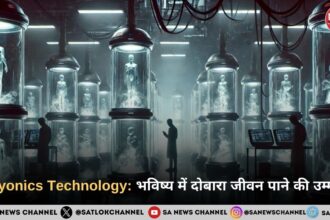Ethanol Blending in India: The continuous increase of world population has given an ultimate boost to the transportation system globally. The transportation system contributes to about 25% of the greenhouse gas emissions globally causing worldwide pollution. These emissions can possibly be reduced either by using electric vehicles or using biofuel as an alternative.
- What is Ethanol Blending?
- What is Ethanol?
- Ethanol Blending Programme in India
- Processes Involved in Ethanol Production
- Ethanol Blending Statistics
- Ethanol Blending Companies in India
- Ethanol Blending in Petrol vs. Diesel
- Global Players in Ethanol Blending
- Benefits of Ethanol Blending
- Ethanol Blending Impact on Vehicles
- Challenges in Ethanol Blending
- Feedstock Availability and Stock
- Distillation Capacity and Investment
- Environmental Concerns
- Consumer Concerns
- FAQs on Ethanol Blending
- Ethanol Blending: A Temporary Fix for a Permanent Problem?
- The Real Answer Lies Beyond Man-Made Fixes
Ethanol blending is the process by which biofuels are used in vehicles allowing them to cause less pollution, reduce emissions and promote sustainable development. India, a large producer of raw materials for biofuels, has an excellent capacity to reduce pollution through ethanol blending significantly. This article explains what ethanol blending is, India’s ethanol blending policy, progress, benefits, process, targets (2030), and its impact on vehicles and engines.
What is Ethanol Blending?
Ethanol Blending is the process of using the biofuel (particularly ethanol) with petrol or diesel with the aim of creating a more sustainable and environmentally friendly fuel causing less emissions.
Ethanol can be made from various raw materials including sugarcane, bagasse, sugar, molasses, sugar beet, corn, cassava, rotten potatoes, damaged foodgrains, surplus biomass, agricultural waste, algae, grasses, twigs, sawdust and forestry waste.
Some of the common blends are:
- E10: 10% ethanol + 90% petrol
- E20: 20% ethanol + 80% petrol
- E27: 27% ethanol + 73% petrol
- E85: 85% ethanol + 15% petrol
What is Ethanol?
- Ethanol or Ethyl Alcohol, an aliphatic hydrocarbon, is a systematic name defined by IUPAC for a chemical compound from alkyl group.
- The word Ethanol resembles three compounds linked into it – ‘eth’ (two carbon atoms), ‘an’ (a single bond between them) and ‘ol’ (attached functional group -OH).
- The chemical formula for Ethanol is — C2H6O or CH3-CH2-OH.
(Source: AI Generated Image)
Physical Properties of Ethanol
| Molar Mass | 46.069 gm/mol |
| Density at 20 degree celcius | 789.3 kg/cm3 |
| Boiling Point at 1 Bar | 78.32 degree celcius |
| Viscosity at 20 degree celsius | 1.17 mPa.s |
| Heat Combustion at 25 degree celsius | 29686.89 J/gc |
| Melting Point | -114.14 degree celcius |
Ethanol Blending Programme in India
- The Government of India initiated some projects with 5% blended petrol in 2001. Along with it, trials and studies were also conducted. EBP was initiated after the success of these trials and studies.
- With the resolution dated 3rd September 2002, the Government of India decided to launch Ethanol Blending Programme (EBP) in India, in January 2003 for sale of 5% blended petrols in nine states and four UTs.
- With the success of the programme, MoP&NG extended the notification dated 20th September 2006 to twenty states and four UTs with effect from 1st November, 2006.
- Public Sector Oil Marketing Companies (OMCs) were also asked to sell 5% ethanol blended petrol as per BIS standards.
- The National Policy on Biofuels, 2018, amended in 2022 advanced the target of 20% ethanol blending from 2030 to 2025-26. Achievement of this target in advance is beneficial or problematic for an Indian Market which seems less ready for this reform, is still a question which hangs in balance.
- Subsequently the nation achieved the target of 10% ethanol blending in 2022 and 20% blending in 2025 successfully and achieved lower emission targets with ease.
- The Government of India is setting the roadmap for its next target to achieve E27 ethanol blending by 2030.
- The government has also reduced the GST on blending ethanol from 18% to 5% to lower production costs.
- All the BS VI vehicles were also advised to meet E20 certification norms from April 2025. Ethanol level should also be shown to consumers.
Ethanol Blending Programme Targets
| Year | Target | Progress |
| 2003 | Initiation of 5% blending | Programme Initiated |
| 2013 | E5 Implementation | Achieved |
| 2022 | E10 Implementation | Achieved, 5 months ahead of schedule |
| 2025 | E20 Implementation | Achieved, 5 years ahead of schedule |
| 2030 | E27 Implementation Target | Roadmap for achievement |
Ethanol Blending Targets by Percentage
| Percentage Achieved | Timeline |
| 10% | June 2022 |
| 12.06% | 2022-23 |
| 14.60% | 2023-24 |
| 17.98% | 2024-25 |
| 19.05% | July 2025 |
| 19.93% | July 2025 |
Processes Involved in Ethanol Production
Process varies depending on the type of feedstock one is offering for ethanol production. There are two types of feedstock — 1G ethanol feedstock and 2G ethanol feedstock.
- 1G ethanol feedstock: Sugar rich stocks and starch rich stocks. Sugar rich stocks include sugarcane juice, sugar beet juice, cane molasses. Starch rich stock include cereals/roots (corn, wheat, cassava). Starch needs to be converted to fermentable sugar through enzymatic action.
- 2G ethanol feedstock: It includes agricultural residues, wood, grasses. It requires physical/chemical pretreatment and enzymatic hydrolysis because sugars are locked in cellulose/hemicellulose.
Pre-processing/Feedstock handling
Sugar feedstocks: Solid/debris/sand/inerts are removed from the feedstock to make it fit for the next process.
Also Read: Renewable Energy Technology: A Solution for the Energy Crisis?
Starch feedstocks: Feedstock is treated with grinding/milling followed by liquefaction and then Saccharification. Liquefaction involved heating the slurry at 85-95 degree celcius. And then glucoamylase converts it into glucose at 55-65 degree celsius and at pH of 4-4.5.
2G feedstocks: Milling, steam explosion, physico chemical pre-treatment to open structure and remove lignin. It is further treated with enzymatic hydrolysis to release glucose and xylose. It is usually a slow process and gives lower yield in the beginning.
Fermentation
- It is the process of converting glucose into ethanol and Carbon dioxide through microorganism action.
- Yeast or Saccharomyces cerevisiae is typically used for the process.
- Desired temperature — 30-35 degree celcius, pH range — 4-4.5, time required — 24-72 hours.
- Yeast action converts glucose into ethanol and CO2 (carbon dioxide). It is converted till ethanol concentration reaches inhibitory level (8-14% v/v in conventional fermentation).
- CO2 is captured for sale or vented out.
Distillation
Distillation allows ethanol to concentrate by boiling and condensing in multiple stages. These steps are done in rectifiers or columns through removal of water. It attains 95-96% v/v (the ethanol water azeotrope)
Dehydration
For attaining fuel based ethanol, azeotrope must be dehydrated upto 99.5% v/v level. Molecular sieves and membrane pervaporation are used to extract 99.5% ethanol. This output ethanol is now suitable for the blending process with petrol.
Denaturation and Blending
Depending on the country and norms, usually, ethanol is treated with a denaturant to avoid beverage misuse. Further, it is blended with petrol in the required percentage. For example, India has now achieved E20 which is 20% ethanol blending fuel. This output is stored and dispatched wherever required.
Ethanol Blending Statistics
- A study by NITI Aayog states that Green House Gases (GHG) emissions are reduced by 65% and 50% by using sugarcane and maize respectively instead of petrol.
- From the Ethanol Supply Year (ESY) 2014-15 to 2024-25 upto July 2025, INR 1,44,087 crore of foreign exchange has been saved.
- Also, 245 lakh metric tonnes crude oil substitution, CO2 emission reduction of 736 lakh metric tonnes has also been achieved in the same timeline.
- These statistics are equivalent to planting 30 crore trees, which doing alone in such a small interval seems next to impossible.
- With the achievement of 20% blending in India, it is expected that the farmers will receive the payment of INR 40,000 crores in this year only. Also, the foreign exchange (forex) savings will reach around INR 43,000 crores.
- India achieved 20% blending of ethanol, a target which was earlier set to achieve in 2030, was achieved recently in the year 2025.
Source: PIB and NITI Aayog
Ethanol Blending Companies in India
Ethanol is transported to retail through a system which includes many companies.
| Level | Companies | Role |
| Producer Level | Balrampur Chini Mills, Bajaj Hindusthan Sugar, Shree Renuka Sugars, Dhampur Sugar, Dwarikesh, India Glycols, Godavari Biorefineries, Vishwaraj Sugar, BCL Industries, TruAlt Bioenergy, etc. | Sugar mills, distilleries, standalone ethanol plants, grain-based distilleries produce ethanol. |
| Procurement Level | OMCs: Indian Oil Corporation (IOCL), Bharat Petroleum (BPCL), Hindustan Petroleum (HPCL), Nayara Energy, Reliance Industries | OMCs float ethanol tenders every Ethanol Supply Year (ESY) which is considered between November to October. Ethanol manufacturers bid, and supply contracts are signed.OMCs allocate supply quotas to depots across states based on demand. |
| Transportation | Bulk transport/logistics firms: TCI (Transport Corporation of India), Aqua Logistics, Seashore Logistics | Responsible to move ethanol in dedicated SS/aluminium road tankers from distilleries to OMC depots |
| Storage and Handling | Indian Oil Tanking Ltd (IOCL + Oiltanking JV), Aegis Logistics Ltd., IMC Ltd. (Indian Molasses Company, Shapoorji Pallonji Group) Other OMC-operated depots | Receive ethanol consignments – Quality checks (purity, density, moisture) — Store in dedicated ethanol tanks to avoid contamination – Use automated systems for precise blending |
| Blending, Distribution and Retail Use | OMC Depots, Fuel stations & Terminals (IOCL, BPCL, HPCL, Nayara, Reliance) | Automated in-line blending units — Blend petrol with ethanol (E10, E20, E85 depending on mandate), Dispatch blended petrol via tank trucks to retail pumps. Vehicle manufacturers adapting to E20 compatibility — Sell ethanol-blended petrol to consumers |
Ethanol Blending in Petrol vs. Diesel
- In India, Ethanol Blending is achieved at 20% recently. With recent achievements in the field of Ethanol Blending, 20% ethanol blending is set to revolutionize the transportation industry. India is also eyeing 27% ethanol blending by 2030.
- After the unsuccessful attempts to blend ethanol with diesel, Union Minister of Road Transport and Highways, Nitin Gadkari recently announced a new breakthrough. He disclosed that Automotive Research Authority of India (ARAI) is trying to blend isobutanol at 10% with diesel.
Global Players in Ethanol Blending
| Nation | Ethanol Blending Percentage |
| Brazil | 30% |
| India | 20% |
| USA | 10% |
| EU | 5-10% |
| China | 2% |
However, despite competing with each other, the policy details and incentives to common public for using ethanol blended fuel varies from country to country.
Benefits of Ethanol Blending
Environmental Benefits
- Reduces greenhouse gas emissions.
- Improves air quality by reducing carbon monoxide.
- As transportation is a major contributor to pollution, it reduces a significant amount of pollution.
Economic Benefits
- Saves foreign exchange (Forex) by reducing crude oil imports.
- Boosts rural economy by purchasing crops from farmers.
Energy Security
- Reduces dependence on fossil fuels.
- Diversifies India’s energy basket.
Agricultural Benefits
- Provides stable demand for sugarcane, maize, and other raw materials used in the manufacturing of bio-fuels.
- It generates employment and reduces wastage of surplus grains.
Ethanol Blending Impact on Vehicles
- The use of Ethanol, especially E20, gives higher acceleration and better ride quality to vehicles.
- It also lowers carbon emissions by approximately 30% as compared to E10 fuel.
- For application in modern high compression engines, ethanol fuels with high octane numbers are very useful as compared to petrol.
- To reduce emissions, Research Octane Number (RON) of petrol has been improved from 91 to 95 by blending it with ethanol. It has been able to meet the requirements of BS VI vehicles more comfortably.
- The rumours that ethanol blending decreases fuel efficiency are bogus as per the Indian Government. A press release supports this and states that mileage is dependent on various factors instead of just fuel.
- Brazil has been running for E27 fuel for years and has been successfully operating. The country is also ready to operate on E30 fuels as well. Car manufacturers like Honda, Hyundai and Toyota have been manufacturing the same cars in Brazil also. However, the long-timeline used by Brazil to implement this policy needs to be evaluated before comparisons and drawing conclusions.
- As per the Indian government, usage of E20 fuel has no impact on the car insurance validity in India.
- However, public opinions and government reactions are not aligning with each other. Public reviews are claiming that E20 petrol or we can say mandated E20 petrol in India is destroying their vehicles parts because of corrosion and affecting their mileages as well.
- The Indian government is not even offering pure petrol as an option to consumers, only the option of E20 — 20% ethanol blended petrol is available at the fuel stations.
- The unverified claims on Union Minister of Road Transport and Highways, Nitin Gadkari for aiding his family business of producing Ethanol, through this policy, is also surfacing on the internet.
Challenges in Ethanol Blending
Feedstock Availability and Stock
- Marking sudden demands of sugarcane for meeting fuel needs, the future may see a competition with food supply and even give rise to food prices as well in the future.
- Sugarcane is a highly water absorbing crop which is more likely to create pressure in drought prone areas in the future. Sugarcane is a highly intensive water absorbing crop, making it difficult to meet water requirements in the future. It is a highly crucial point to consider.
- Like in Punjab, the ground water levels have dropped significantly because of the intensive green revolution in the state that happened years ago. In most of the districts, the ground water level suitable for drinking has dropped to between 400-500 ft. below the Normal Ground Level (NGL).
- Harvest cycles in India can make supply of the crop difficult for the entire year.
Distillation Capacity and Investment
- Ethanol blended fuel often costs more than petrol. It often demands government aided subsidies in the fuel sector as well.
- Ethanol distilleries are primarily located in a few states namely Uttar Pradesh, Karnataka and others which is likely to cause imbalance in supply and demand in such a short duration.
Environmental Concerns
- It can lead to water scarcity in many regions as sugarcane, which is the major contributor in the feedstock, requires a considerable amount of water.
- Continuous demand of sugarcane can give rise to disturbed cropping patterns and farmers income.
Consumer Concerns
- The biggest concern to consumers is not the price, instead it is the deterioration of their vehicles by using E20 petrol.
- There have been unverified news reports surfacing on social media as well claiming that vehicle insurance is not likely to cover damages due to usage of E20 petrol.
- Like Brazil offers benefits to people for using ethanol blended fuel, the same has to be offered to Indian citizens as well.
- Most of the vehicles in India, only a small percentage of vehicles — which are manufactured after 2023, are E20 compatible. This is only for four wheeler vehicles, none of the two wheelers are compatible. Only Honda has been manufacturing cars compatible with E20 before 2023, others were either E5 or E10 compatible.
FAQs on Ethanol Blending
Q. What is blending of ethanol?
Blending ethanol means mixing ethanol (a biofuel) with petrol or diesel to reduce fossil fuel use and emissions.
Q. What are the benefits of ethanol blended fuel?
It reduces pollution, cuts oil imports, boosts farmers’ income, and supports renewable energy adoption.
Q. What is the ethanol blending policy in India?
India aims for 27% ethanol blending in petrol by 2030 and 10% isobutanol blending in diesel under the National Policy on Biofuels.
Q. How is ethanol blending done?
Ethanol is produced from crops, distilled, purified, and blended with petrol at refineries or depots before supply.
Q. What is 20% ethanol blending?
E20 fuel contains 20% ethanol + 80% petrol. India has achieved nationwide rollout by 2025.
Q. Does 20% ethanol blending give better mileage?
Mileage is dependent on various factors but 20% blending offers better acceleration and ride quality.
Q. How much ethanol in petrol in India?
As of 2025, India achieved 20% ethanol blending. The goal is 27% by 2030.
Ethanol Blending: A Temporary Fix for a Permanent Problem?
At first, ethanol blending looks like a clever answer to some of our biggest global challenges. By mixing ethanol into petrol, we reduce our dependence on fossil fuels, cut down on harmful emissions, and even create better income opportunities for farmers. It’s framed as a shining step towards a cleaner, greener, and more sustainable future — an example of human innovation.
But when we take a closer look, the picture isn’t so simple. The very crops used for ethanol are also vital for food. This sparks the well-known ‘food vs. fuel’ debate. If too much farmland and resources are directed towards producing ethanol, it can cut down food supply, drive prices up, and in the process, solve one problem while quietly creating another. It makes us wonder: are we truly fixing things, or just shifting the weight of the problem from one shoulder to another? Why does life on this planet so often feel like an endless cycle of scarcity, where every solution breeds a fresh challenge?
The Real Answer Lies Beyond Man-Made Fixes
This never-ending chase for solutions reveals a deeper truth — one that technology and science cannot touch. Jagatguru Tatvdarshi Sant Rampal Ji Maharaj explains that this world itself is built on imperfection and lack of resources. It belongs to Kaal Brahm (Satan), who designed it as a place of struggle, where souls revolve in the loop of effort and suffering. Our constant attempt to make this world ‘sustainable’ is, in reality, an effort to make a temporary place permanent.
Deep down, our yearning for peace, security, and abundance is not weakness. It is a memory of our true home — Satlok. Satlok is the eternal realm of Supreme God Kabir, where there is no death, no decay, no scarcity, and no suffering. Every soul once belonged to that perfect place but was separated from it due to spiritual violation. Ever since, we have been trying to recreate that eternal peace here — but in a world that was never meant to provide it.
That is why no new fuel, no breakthrough invention, and no human effort can give us lasting peace. The real solution lies in returning to our eternal home. Sant Rampal Ji Maharaj reveals the true worship that can cut the chains of karmic bondage, end the cycle of suffering, and guide souls back to Satlok — the only place that can truly be called sustainable.
For understanding the root cause of this suffering and the way to attain complete freedom, one must listen to the true spiritual knowledge of Sant Rampal Ji Maharaj on the following platforms:
- Website: www.jagatgururampalji.org
- YouTube channel: Sant Rampal Ji Maharaj
- Facebook page: Spiritual Leader Saint Rampal Ji
- X handle: @SaintRampalJiM









